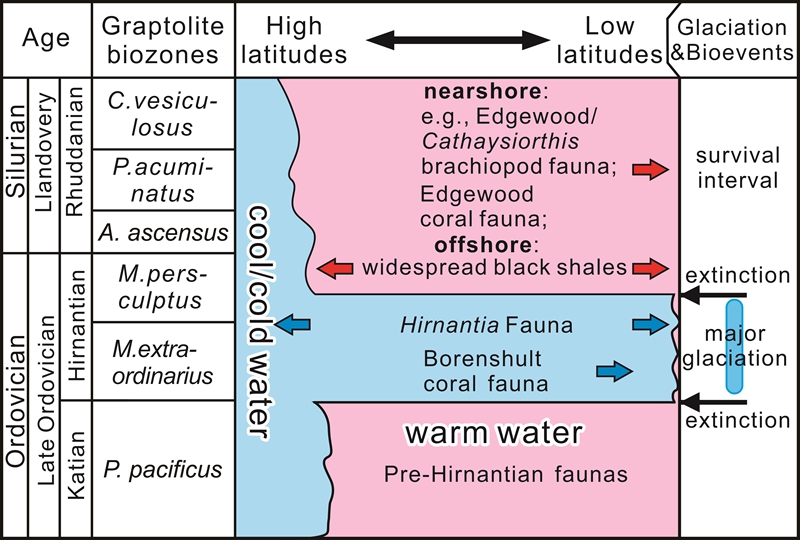
Coral faunal turnover across the Ordovician–Silurian transition in South China The end-Ordovician glaciation has widely been regarded as having profound influence on the biogeographic distribution of shelly fauna, as shown by time equivalence of brachiopods of the tropical Edgewood province with those of the higher-latitude Kosov and Bani provinces. Recent investigation conducted by Dr. WANG Guangxu fromNanjing Institute of Geology and Palaeontology, Chinese Academy of Sciences and his colleagues reveals an adaptive phase during the Hirnantian glaciation, followed by an early survival phase and finally a late survival phase that persisted into the early Silurian. They demonstrate that a coral assemblage of latest Hirnantian to earliest Silurian age, remarkably similar to those from the Edgewood fauna known from Laurentia, occurs stratigraphically above the typical Hirnantian fauna. This, in combination with other evidence (e.g. brachiopods, lithology and chemostratigraphy), suggests the Edgewood fauna probably post-dated the early–middle Hirnantian glaciation, rather than being coeval with the older glacial-related Hirnantia fauna. Evidence from South China shows that the Edgewood fauna appeared in the very latest Hirnantian and extended into the middle Rhuddanian, considerably younger than previously believed. Such a new correlation necessitates a reassessment of the influence of the end-Ordovician glaciation on biotas. They argue that this major glaciation probably would have substantially affected the ecosystem even in tropical regions, as shown by the development there of the Hirnantia fauna or, alternatively, the presence of a conspicuous stratigraphic hiatus. This suggests a surprisingly rapid biotic recovery during the subsequent postglacial transgression, represented by the flourishing of comparatively diverse shelly faunas (e.g. the Edgewood fauna and the Cathaysiorthis brachiopod fauna) in nearshore shallow water environments from Laurentia to eastern peri-Gondwana terranes or blocks (e.g. South China). 
Possible relationships between the bio-events and glaciation through the Ordovician–Silurian transition (Information Source: Nanjing Institute of Geology and Palaeontology, CAS) |

